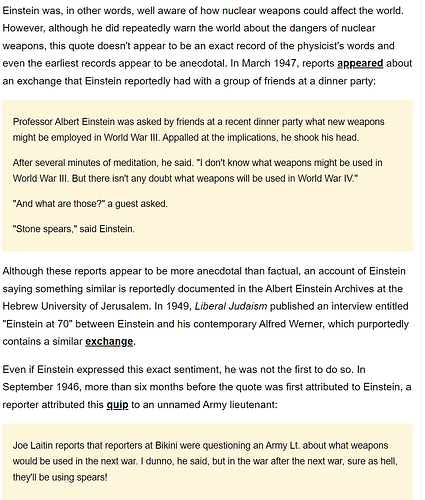Is Limited World War III Imminent
12 October 2024
Tensions rise as flashpoints and chokepoints threaten global stability amid geopolitical turmoil
Recent developments across various global regions have sparked speculation about the possibility of what some analysts are calling a Limited World War III (L-WW3). Unlike full-scale wars of the past, the scenario outlined by experts suggests conflicts might erupt without the all-out destruction typically associated with global warfare.
According to Mathew Maavak, who delves deeply within this narrative, the potential for L-WW3 is driven by flashpoints, chokepoints, and high-value targets rather than massive military confrontations. Tensions worldwide are simmering, particularly between major powers, as regional conflicts, cyber warfare, and proxy battles could ignite rapidly.
One pressing flashpoint is the rising hostility between Israel and Iran. Tensions escalated significantly on October 1, 2024, when Iran launched nearly 200 hypersonic missiles at select Israeli targets. This dramatic action came as retaliation for what many described as the genocide occurring in Gaza, targeted assassinations of key Iranian military figures, and destabilizing attacks on groups like Hamas and Hezbollah.
The situation is precarious; significant military responses are on hold, with Israeli officials taking their time to strategize and assess the support they might receive from the U.S. political scene, especially with the presidential elections approaching. They are wary of how incoming U.S. leadership could affect their military actions against Iran.
The conflict isn’t limited to the Middle East. Ukraine remains another hotspot ripe for escalation. With Russia likely to solidify its military objectives within Ukraine prior to the inauguration of the next U.S. President, analysts warn of the dangers posed by neglecting this front. If Russia captures significant territories like the Donbas region and the Odesa oblast, Ukraine could find itself entirely landlocked, drastically altering the regional power dynamics.
Countries like North Korea and China are anticipated to act cautiously, biding their time and avoiding significant engagement until they assess the developments stemming from the Middle Eastern situation. While North Korea may launch missiles provocatively over Japan, and China might pursue aggressive naval maneuvers, both nation-states seem unlikely to ignite immediate flashpoints of their own until the broader geopolitical picture becomes clearer.
Next, we have the current maritime chokepoints considered as pivotal locations likely to be central to any L-WW3. These key areas are integral not just for military navigation but for global trade—impeding operations at these points could create economic upheaval and drastically shift power balances.
For example, take the Strait of Hormuz: it’s not just another waterway; it facilitates 20-30% of the global oil supply. Should Iran decide to disrupt traffic here, the ripple effects could lead to heightened global fuel prices, hyperinflation, and economic instability. This potential disruption could be realized with relative ease, as Iran has previously hinted at military interventions like sinkings or blockades.
Also critically important is the Bab el-Mandeb Strait, which connects the Red Sea to the Gulf of Aden. Attacks by Houthi militias have already posed threats to merchant vessels transiting this region, complicate shipping routes dramatically and impacting broader global trade.
The Suez Canal, connecting Europe and Asia, is also at risk should maritime operations falter. Iran has been suspected of using its proxy forces like Hamas to target shipping routes, and any serious conflict could disrupt this strategic avenue, cutting off one of the world’s busiest maritime trade routes.
Shifting focus to Asia, the Strait of Malacca plays host to 25% of global maritime cargo and is seen as another major chokepoint. It is of immense importance to economies dependent on oil shipped from the Middle East. Any threats here could cause immediate crises for countries like China and Japan, which rely heavily on maritime links for energy supplies.
The South China Sea is another contested area rife with territorial disputes, especially between China and neighboring nations. Given the increasing assertiveness of China, tensions could flare anytime against the backdrop of U.S. naval patrols supporting regional allies.
Let’s not forget the Taiwan Strait, which has become increasingly strained as China eyes reunification with Taiwan. A conflict here could stretch U.S. military resources thin, particularly if attempts to stabilize the Iranian situation compel American forces to stay on alert elsewhere.
With these pressing conflicts on the horizon, experts also warn of the revival of nuclear tensions reminiscent of the Cold War. Following Russia’s military actions against Ukraine, the environment has become palpably tenser. The capabilities of nuclear arsenals have seen significant advancements since earlier decades. With the U.S. and its counterparts like Russia and China adopting more aggressive postures, the prospect of simultaneous nuclear confrontations is more tangible than it has been for generations.
Despite the fears of escalation, some analysts, like Thomas Schelling, have wrote about deterrent systems aimed at preventing all-out nuclear wars. He noted the balance of power during the Cold War was maintained through mutual assured destruction, which inhibited outright conflict. Yet, current trends suggest the fragility of this balance, with new technologies and aggressive geopolitical moves threatening to upset the status quo.
Even as global tensions rise, some experts argue there still exists hope for de-escalation. They maintain the importance of diplomacy and cooperative measures cannot be understated. Continued dialogues among major world players might pave the way for mitigating conflicts without exploding past the point of no return.
Still, as tensions continue to rise, many are left wondering what the future may hold. Will the world plunge headlong toward another global conflict, or will wisdom and foresight prevail, ushering in new strategies focused on stabilization and deterrence? The complexity of these international dynamics indicates challenges remain, along with the pressing need for worldwide cooperation to prevent the worst outdoor scenario of friction transforming dangerously.
Considering the unpredictable nature of world politics today, it’s clear the stakes are higher than ever. With so many nations situated on the edge, one can only hope rationality prevails, guiding decisions made by global leaders amid pressing challenges.



